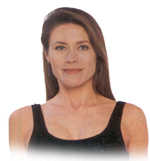Dosha imbalances | Dosha subtypes
Accelerated self-study of meditation

Body Type Traits – Doshas
For a better understanding of your Ayurvedic constitution and for cross-checking the test results, below is a list of the main physical and psychological characteristics of people with one dominant dosha in their constitution.
Vata ("wind") |
Creativity • Enthusiasm • Freedom • Generosity • Joy • Liveliness

People with a dominant Vata dosha, or, in other words, with a Vata disorder in the direction of its increased manifestation, are often characterized by malnutrition, constipation, insomnia, impotence, absent or irregular periods, reduced muscle mass, headaches, neurosis, dry skin, rheumatism, arthritis, flatulence (gas accumulation in the stomach and intestines), cramps and colic, premature aging, as well as a large number of other symptoms and disorders. Vata-dominated people should strictly follow the certain diet. If there are only isolated disorders of vata, but the constitution (dosha) itself is different, then it is necessary to follow the diet below only until these disorders disappear.
Physically, such people are either very tall or very short, not muscular, with thin and lean limbs; they have a fast gait, which is characterized by short, quick steps. The skin is generally thin, darkish and cool. The hair is thin, dark, coarse, being either curly or crimpy. The face is usually long and angular, often with an underdeveloped chin. The neck is thin and skinny. The nose is small and narrow, may be long, hump or asymmetrical. The eyes tend to be small, narrow or sunken, dark brown or grey, with a dim sheen. Vata-dominant people have a small mouth with thin, narrow or tightly compressed lips. Teeth irregular, protruding or broken, protruding significantly from the gums. The voice is weak, low or broken, although speech is fast and broken.
Vata people have a restless mind and poor memory. They avoid confrontation. They have an active and sensitive nature and express themselves through athletic and creative pursuits. Usually artistic and creative with a good imagination, sometimes they indulge in overindulgence. Of all the doshas, they are the most sexually active. Fearful, suspicious and restless, they ask a lot of questions, theorize and over-analyze. Often dissatisfied with friendship, they are unable to maintain it. Vata-dominated people spend money quickly, often on trifles. They sleep 5-7 hours a day, and their sleep is light and intermittent.
Diet
Eat warm, well-cooked sweet, sour, and salty foods at least three times a day. Avoid hot, bitter and spicy foods. Due to their hypersensitivity, these people often suffer from food allergies, even when they eat food that is usually quite acceptable, including for themselves under normal circumstances. Instead of ignoring such dishes, it is better for people with Vata dosha to use Ayurvedic remedies. Basically, fasting does not do them any good, as it increases the elements (ether and air) of Vata. Under certain circumstances, fasting for one or two days with grape juice and water may be helpful. It is recommended to fast from 12 to 24 hours twice a month. Vata people need plenty of water, milk, fruit juices, and warm, licorice-sweetened herbal teas that have a calming effect. Try to never eat alone, while watching television, or when you are excited and nervous. See also "Planning a Diet - Choice of Food" for more information on choosing a diet.
Massage oil
Soothing and warming, such as Mahanarayana.
Exercises
Moderate-intensity exercise such as Pilates, postural yoga, walking, and lifting light weights.
Recommended herbs and supplements
Ashwagandha, Shatavari, Haritaki, Guggul, Trikatu, Vata tea, calming tea.
|
Pitta ("bile") |
Ambition • Focus • Trust • Courage • Pursuit of Knowledge • Happiness • Reasonableness

People with Pitta dosha dominance, or, in other words, those who have a Pitta disorder in the direction of its increased manifestation, are characterized by most of infectious diseases, inflammations, skin diseases, liver diseases, increased stomach acid, diarrhea, high blood pressure, ulcers and other disorders. People with Pitta dosha have a very good digestive system that easily absorbs a wide variety of foods and is good at digesting food combinations with low nutritional value or unhealthy foods. However, the resulting toxins wander through the bloodstream, causing eczema, abscesses, pimples, and other skin ailments. Pitta-dominated people should strictly follow the certain diet. If there are only individual disorders of Pitta, but the constitution (dosha) itself is different, then it is necessary to follow the diet below only until these disorders disappear.
Individuals with a Pitta temperament have a moderately developed physique with muscular limbs and a purposeful, steady gait of medium speed. They have a loud, strong voice and precise, persuasive speech. Their skin is bright, soft, shiny, warm and tends to burn easily in the sun; it tends to be covered with freckles, it has many moles, it is prone to rash. Their body is hot and sweaty. People with a Pitta temperament are characterized by beautiful and soft hair of a light or reddish color, which tends to gray quickly. The face is shaped like a heart, often with a pointed chin. Their neck is proportional and of medium size. A straight, pointed, medium-sized nose corresponds to medium-sized eyes, which are either light blue, or light gray, or brown, with intense brilliance; they turn red in summer or after bathing. Pitta-dominated people have both mouth and lips of medium size; they also have yellowish teeth of medium size.
People with Pitta dosha are intelligent and thorough, which come from their highly aware and focused minds. Sharp in anger, by nature they are irritable, jealous and aggressive. Insightful and reasonable, they stand out for their ability to express their thoughts well, education and pride. With a developed sense of responsibility, they can make good decisions and organize activities correctly. They love to argue, but they have a sense of humor. Their selectively superior memory makes them good learners, picking up new things quickly. Moderately passionate in sex. They spend money sparingly, usually on luxury items.
Diet
Warm or cool foods that are sweet, bitter, or astringent are recommended rather than boiled or steamed foods that increase the elements (fire and water) of Pitta. Refrain from eating spicy, salty and acidic foods. The diet should have a cooling effect. Fried and very spicy food, as well as very late dinner, should be avoided in every possible way. Raw fruits and vegetables are very much recommended. One should not fast as it increases the elements of Pitta; fasting is possible twice a month with the use of apple, grape and pomegranate juice. Such people need a lot of liquid. Pure water (without carbon dioxide, i.e. non-carbonated), sarsaparilla extract, fruit juices, teas and milk are beneficial. Strong alcoholic drinks and coffee are not recommended. Cool and sweetened bitter herbal teas are very good for such people, as they remove intoxicants from the liver, a vulnerable organ of people with Pitta dosha. Due to their good digestion, such people easily tolerate the loss of some vitamins and minerals, but they need to be replenished with calcium and iron. By nature, such people are very emotional, so the atmosphere should be calm while eating. Family and work matters should not be discussed at this time. See also "Planning a Diet – Choice of Food" for more information on choosing a diet.
Massage oil
Cooling, such as "Chandanbala Lakshadi".
Exercises
Moderate-intensity exercise such as jogging, swimming, Pilates, postural yoga, cycling, and weight lifting.
Recommended herbs and supplements
Haritaki, bhumiamla, Chyawanprash, surakta, sitoplady churan, Pitta tea.
Kapha ("mucus", "phlegm") |
Caring • Centered • Compassion • Satisfaction • Faith • Fulfillment • Groundedness • Tolerance • Feeling cared for • Stability • Support • Tenderness

People with a predominant dosha of Kapha, or, in other words, having a disorder of Kapha in the direction of its increased manifestation, are characterized by obesity, high cholesterol, dropsy, respiratory and sinus diseases, diabetes, gall and kidney stones, low blood pressure and other disorders. The accumulation of mucus in the body is always a sign of too much consumption of such food, which increases the elements of Kapha. Kapha-dominated people should strictly follow the certain diet. If there are only isolated disorders of Kapha, but the constitution (dosha) itself is different, then it is necessary to follow the diet below only until these disorders disappear.
Large, stout, with a well-developed physique and large long limbs, people with a Kapha temperament have a pleasant, deep and resonant low voice with slow and rhythmic speech. Their skin is usually thick, shiny, pale or white and cold. They have dense, thick, wavy, shiny, and usually brown hair and a large, round, and full face. The neck is solid, powerful, similar to the base of a tree trunk expanding below. They have a large, rounded nose and large, attractive, blue or light brown eyes. They have a large mouth with large and full lips. Their teeth are also large, white in color, with nice tight gums.
People with a predominant Kapha dosha are calm, stable, attentive, serious and patient individuals. It is difficult to anger them, but if this does happen, then it is not easy for them to calm down. They are noble, true to their words and avoid lying. Loyal, forgiving and understanding, they can be lethargic and even lazy when not controlled by others. Learning may be slow, but memory will be good. They excel at logical analysis, but they take time to reach conclusions. Long and deep sleep and energetic and prolonged sex are natural for them. If they manage to save money, they spend it on food. From time to time they can show an element of dullness, due to the fact that the mind of people with a Kapha temperament is usually too satisfied to seek fresh mental stimulation.
Diet
Reduce the amount of warm food. Avoid sweet, sour, and salty foods that increase the elements (water and earth) of Kapha. Eat foods that are pungent, bitter, and astringent. The main meal should be taken between ten o'clock in the morning and half past one. Breakfast may be excluded and dinner must be taken before sunset. If possible, it is better not to eat anything between meals. Under no circumstances should you take a nap after eating. Healthy people with Kapha dosha should fast one day a week. Due to their constitution, they need very little liquid and are advised to drink as little as possible. Drinking cold and soft drinks should be avoided at all costs, as such people may develop a runny nose or cold even after drinking just one glass of cold lemonade. Herbal teas with honey are highly recommended. Coffee and tea in moderate amounts are not harmful. Beer, red wine and strong alcoholic drinks are not recommended. Milk must be diluted with water by half and consumed warm. In addition, people with Kapha dosha need to be careful not to alleviate their emotional problems by increasing their food intake. See also "Planning a Diet – Choice of Food" for more information on choosing a diet.
Massage oil
Stimulating and energizing, such as Punarnavadi and Srigopal.
Exercises
Regular and energetic.
Recommended herbs and supplements
Guggul, sitoplady churan, trikatu, Chyawanprash, Kapha tea.
Vata-Pitta |
The traits of such people reflect a combination of Vata and Pitta doshas. For example, they often have wavy hair, caused by a combination of the curlyness of vata and the straightness of pitta. Basically they have poor blood circulation. They love to eat, but they have trouble digesting large amounts of food.
A healthy Vata-Pitta balanced individual has the ability to think in an original way, a characteristic of Vata, and an expert in putting the theory into practice, a characteristic of Pitta. Lightness (quickness) and intensity (diligence) are common qualities of Vata and Pitta. The proper use of this intensity is to use your quickness for the purpose of intense self-development. When a person's Vata and Pitta are mismatched, alternating fear and anger appear as a response to stress.
You can learn more about the features of the Vata-Pitta constitution from the description of the doshas of Vata and Pitta.
Pitta-Kapha |
Of all constitutions, people with Pitta-Kapha seem to be best adapted to the confusion, inconsistency and constant change that characterizes the world today, because they combine the stability of Kapha and the adaptability of Pitta. Many people who have achieved all-round success in life have a Pitta-Kapha constitution. An active Pitta metabolism balances the powerful Kapha physique for good health, and the anger of Pitta is well tempered by the foresight of Kapha, which promotes good mental balance.
The ease with which they achieve success in the world develops the arrogance and self-assurance of pitta and the prim complacency of kapha, which can completely isolate the individual from all reality.
Bitter and astringent foods suit them best.
You can learn more about the features of the Pitta-Kapha constitution from the description of the doshas of Pitta and Kapha.
Kapha-Vata |
People with Vata-Kapha tend to be tall, but with an average build and most other physical qualities, similar to people with Pitta dosha. Vata and Kapha are united by their coldness. However, they still do not suffer as much from physical cold as pure types of Vata due to the strength and protection of Kapha. They have a double emotional need for warmth.
Their inherent lack of warmth usually manifests physically as disorders of the digestive tract, especially constipation; diseases of the respiratory organs with much secretion of mucus are also common to them. They may be afraid to make decisions without proper prior research.
They should eat sour, salty and spicy foods.
More details about the features of the Kapha-Vata constitution can be found in the description of the Kapha and Vata doshas.
Sama-dosha |
From a physiological, emotional and psychological point of view, such a person is an ideal type. All three bio-energies in it are well balanced. Such a biotype suffers much less from emotional ups and downs, and is also well protected from diseases. If he/she does get sick sometimes, it is usually due to bad food or external (climate, season, etc.) influences. Well-balanced people notice even the smallest details. They follow a very well thought out daily routine because they believe that success never comes easy.
They are considered important exemplary personalities, and they often occupy a very important position in society. Unfortunately, such people are extremely rare.
In addition, there is always a chance of scoring the same number of points as a result of testing only for any two doshas. Such people have the qualities of both of these doshas, being "balanced" within only two of the three doshas.
The recommendations and advices provided on this website are for informational purposes only. Consult your dietitian and/or physician before using it.
Introduction
| Determine your body type – your dosha | Body type (Doshas) traits
Dosha imbalances | Dosha subtypes
Accelerated self-study of meditation

|
|